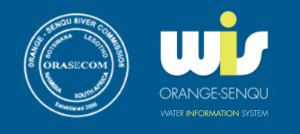Overview
The main objectives of this consultancy were to undertake scenario analyses, economic, water requirement projection and ecological support studies to produce the 2014 Orange-Senqu Integrated Water Resources Management Plan (IWRMP). The Project included 5 work packages that are described below.
Funding Organisation(s):
WP 4A: Economic Analysis of Water based on Water Accounting for the Orange-Senqu River Basin
The purpose of this report is to estimate water accounts for the Orange-Senqu basin and determine whether the basin is managing its water in an efficient, equitable and environmentally sustainable manner.
In order to achieve this output, the following four activities are proposed:
- Review of previous work done in water accounts and collect data
- Estimate basin water accounts
- Describe the trade in virtual water and water in the economy
- Interpret economic value efficient and benefit.
Report:
Database:
ORASECOM Water Accounts Database – Draft
WP 4B: Water Demand Projections and Synthesis of Planned Infrastructure Investments
The purpose of this report is to ensure that the most up-to-date and accurate water demand and -infrastructure information is being used in the water resource modelling (WRYM and WRPM) work that feeds into the IWRM plan. The work has been designed to utilize and incorporate data from existing databases that have been developed during various projects in the past and to review and where possible improve this data with newly collected and up to date data taken from new reports and collected from stakeholders.
Furthermore, a variety of infrastructure assets including related demands are under development or are planned in the basin with the need for respective information and demand projections to be included. The work includes the most up to date and comprehensive dataset for both current and projected water demands as well as return flows. The updated database ensures that the modelling that feeds into the IWRM plan development uses the most accurate data.
Report:
Database:
Orange-Senqu Water Demand Projection Database – Draft
WP 4C: Water Resources Modelling, Baseline Scenario, Yield Analysis, Stochastic Verification and Validation
The Senqu, Orange Vaal system is a highly complex and largely integrated system. It also includes several transfers into and out of the basin and therefore requires the inclusion of parts of other neighboring river basins into the water resources modelling setup. A proper detailed model representative of the water use and water resource activities within this integrated system is an absolute necessity, as it is not possible to effectively and efficiently plan and operate this large and complicated system without the aid of such a tool.
Two models are used to simulate the entire integrated system, the Water Resources Yield Model (WRYM) and the Water Resources Planning Model (WRPM). As the names indicate, the WRYM is used to determine the yield of the system and sub-systems within the system. The WRPM uses these yield results as input and are used for planning and operating purposes. Two separate reports will be produced from Work Package 4c, the “System Yield Analysis” Report that focus on the WRYM related work and the “System Planning Analyses and Evaluation of Scenarios” Report which summarises the work related to the WRPM analyses.
Reports:
Database:
Water Resources Modelling Database – Draft
WP 4E: Consolidation of Knowledge of Water Quality and Environmental Flow Requirements
The main objectives of this work package were to:
- provide a consolidation of the state of knowledge on water quality in the Orange-Senqu Basin, and
- provide recommendations on water quality related actions for the development of the IWRM plan.
- consolidate information on work carried out on environmental flow requirements at key points basin-wide
- provide information for decision-makers and other stakeholders on the implications of different combinations of water resource development scenarios on the ecological status at each key point as well as vice versa (the implications of maintaining different levels of ecological status) on different development options
Reports:
WP 4F: Economic Approaches to Water Resources Management in the Orange-Senqu River Basin
Economic Instruments (EIs) are approaches that are intended to modify individuals and corporations’ behaviours in a favourable manner, such as reducing water consumption, reducing pollution, or adoption of water efficient techniques such as modern irrigation systems. There is therefore a need to increase the use of economic instruments, through enforcement or voluntary measures, and to share the knowledge and experiences in order to improve the effectiveness of the systems. Utilising EIs has a number of advantages that were addressed in this workpackage, such as:
- Avoiding the cost of extensive infrastructure investment and making use of lowcost, non-technical measures;
- Generating revenue to finance water management, monitoring and other water related infrastructure;
- Aligning incentives and strengthening policy coherence across the different interrelated sectors, such as water, energy, food or land-use; and
- Providing relevant information on the cost of current systems, the benefits of system improvements, and the distribution of associated costs and benefits.
Report:
